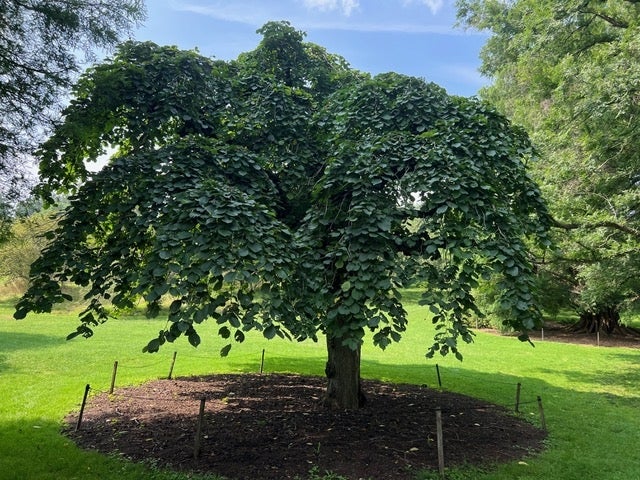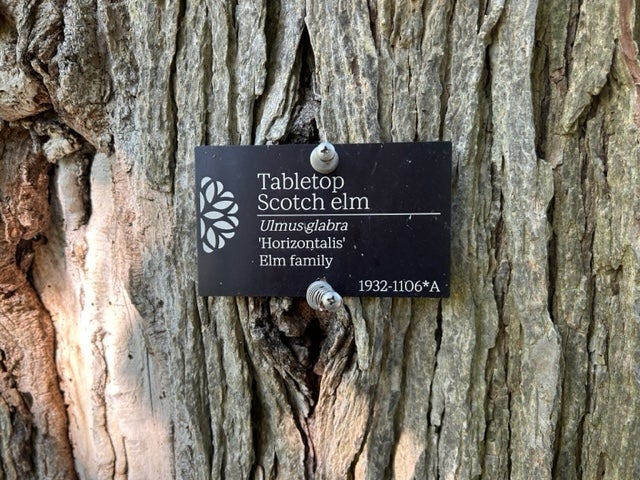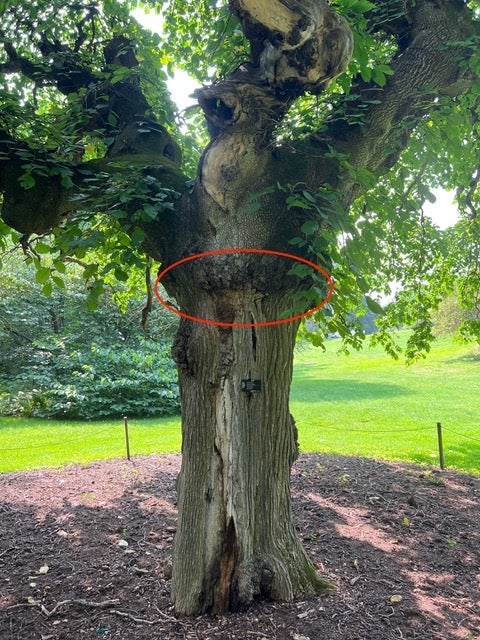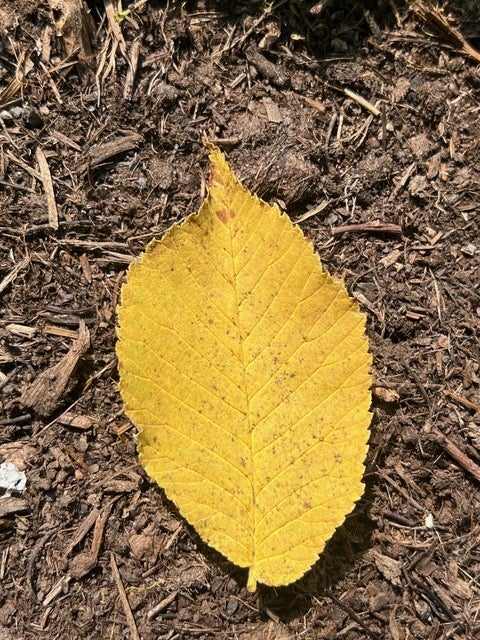Blog


Ulmus glabra 'Horizontalis' (Tabletop Scotch elm) is a treasure at the Morris Arboretum & Gardens—one of very few arboreta in the US to cultivate one—and this tree was planted on the Morris Estate sometime before 1909.
Ulmus is the classical Latin name for an elm, and this tree has the typical elm leaf (see photo). The specific epithet, glabra, means smooth, referring to the bark. ʻHorizontalis' refers to the horizontal growth habit of this cultivar; it was initially called 'Pendula,' i.e. weeping, but 'Horizontalis' prevailed as a more accurate description.


Ulmus glabra 'Horizontalis' is an example of a grafted tree. Grafting can be traced back 4,000 years to ancient China and Mesopotamia and has a practical use in fruit production, although in this case its application is purely ornamental. Grafting requires skill, as the vascular cambium tissues of the upper part of one plant (scion) must be closely matched with the vascular cambium tissues of the root system of another plant (rootstock). The technique was well-known to 19th-century European gardeners, a society that was always on the lookout for new and exciting garden plants, especially weeping and contorted trees.
Ulmus glabra 'Horizontalis' has a provenance dating from circa 1816. In a plant nursery in Perth, Scotland, a seedling of Ulmus glabra differed from the rest: it was procumbent, growing along the ground rather than upright. Branches from the procumbent form (scion) were grafted onto the rootstock of a typical upright Ulmus glabra to allow the procumbent branches to be displayed to best advantage as they grew. The result is a unique flat-topped tree with horizontal branches; the flat top conjures the image of a table, hence the common name. The scar that forms at the graft union can be more or less perceptible, depending on how the wound heals.


One can still find Ulmus glabra 'Horizontalis' for purchase, with the caveat that this grafted cultivar is considered as susceptible to Dutch Elm Disease as any other member of the genus Ulmus. (Dutch Elm Disease is a fungus carried by beetles that has decimated most of the native elms of North America.)
The over-a-century-old tabletop Scotch elm at Morris is a tree with four season interest: the leaves turn yellow in the fall and the scar at its graft union always adds to its mystique. Check out the Great Trees webpage to find the location of this tree and of the other “Great Trees” at the Morris.
Katherine has her Certificate in Botany from the New York Botanical Garden and is a botanical tour guide and freelance writer. You can contact her with comments at botanicaltours.weebly.com